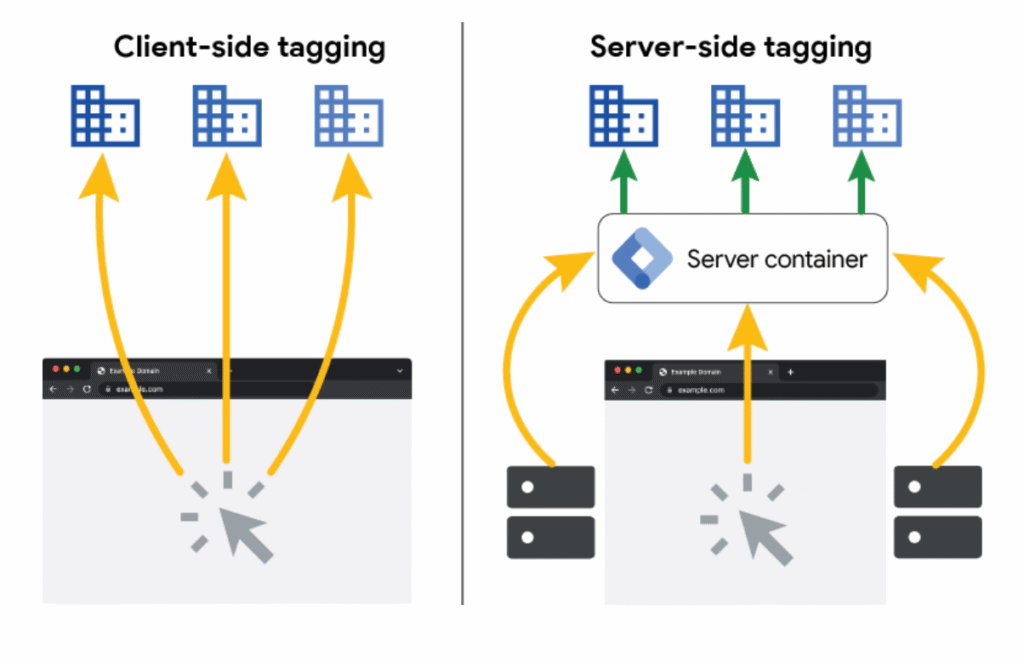From targeting to trust: How privacy-first PPC turns GA4 into a customer compass

The ground under digital marketing is shifting. Third-party cookies are dying, and browsers are locking down tracking. People are actually reading those consent prompts now. If you run paid media, this isn’t just a minor headache, as you need to rethink everything.
Privacy-first PPC is how we keep campaigns working without being creepy. And Google Analytics 4 (GA4)? It’s basically the only analytics tool built for this mess, and it works with less data and does more modelling. Ultimately, it helps you understand what customers actually want, rather than just counting clicks.

We’re ditching the old playbook of tracking every move people make online. Now it’s about consent, being upfront, and using your own data. Here’s the kicker: This doesn’t just keep lawyers happy. It actually makes your numbers better and your brand stronger.
Find out how privacy-first PPC turns GA4 into a customer compass. Keep reading to learn how to integrate this PPC approach and build trust with your customers.
The rise of privacy concerns and regulations
People are fed up with how companies handle their data. Most folks care deeply about this stuff and will literally switch brands if you’re sketchy with their info. This isn’t just a millennial issue; it’s a problem affecting everyone involved.
The government caught on. Europe’s General Data Protection Regulation (GDPR) began imposing real fines on companies. The state of California followed with its California Consumer Privacy Act (CCPA), which has actual teeth. More states keep piling on. Even Chrome is phasing out cookies and replacing them with Privacy Sandbox alternatives.
Here’s what this means: If you ignore privacy laws, you’re not just risking fines. you’re killing your growth. Sure, fines hurt, but losing customer trust? That’ll tank your acquisition costs permanently.
Learn from Jeffrey Zhou, CEO and Founder of Fig Loans. He runs a finance firm offering personal loans and credit-building services. If anything, he ensures 100% data privacy to protect his clients’ financial information.
Zhou says, “Privacy compliance actually opens doors. Are the companies building privacy into their DNA from day one? They’re attracting customers who care about this stuff. Every privacy decision you make now saves you from expensive problems later, plus it sets you up for real growth.”
What is privacy-first PPC?
Privacy-first PPC flips the old approach on its head. Instead of hoovering up data and figuring it out later:
- You ask permission first and stick to it.
- You only grab what you actually need (and explain why).
- You use your own data and aggregate signals.
- You give people a reason to opt in.
This is nothing like the old days of micro-targeting everyone who breathed near your website. Now it’s about quality: Smaller audiences who actually said yes, better ads, and measurement that works.
The ultimate goal is to optimize your PPC’s conversion tracking in a privacy-first world. Needless to say, it’s important to be wary of those cookies!

Take it from Adrian Iorga, Founder and President at 617 Boston Movers. He has his fair share of running PPC ads through his marketing team. He sees the value of promoting Privacy-first PPC ads to avoid legal and financial consequences.
Iorga explains, “Privacy-first PPC actually performs better. When you focus on getting real consent and being transparent, you get people who actually want to buy. Are the brands crushing it right now? They’re creating real value exchanges that respect what users want.”
The results speak for themselves. Teams that do this right see better Customer Match rates and stronger email performance. Their campaigns don’t break when platforms change their rules.
Introduction to Google Analytics 4 (GA4)
As a PPC marketer, it’s crucial to understand Google’s privacy policy and PPC guidelines. To begin, Google Analytics 4(GA4) was built for this privacy-first world. It tracks events, respects privacy, and uses modeling to fill in gaps instead of sketchy workarounds.
The big stuff:
- Privacy built in: No IP logging, regional controls for data
- Consent-aware: Tags adjust based on user choices, models fill gaps
- Event tracking: You track actions that matter, not just pageviews
- Predictions: Purchase probability, churn risk, audiences that actually work

- Real attribution: Finally, credit for all touchpoints, not just last click
- Raw data: Free BigQuery export for custom analysis
Grant Aldrich, Founder of Preppy, recommends leveraging modern technologies like GA4 for PPC advertising. He has witnessed the glorious evolution of Google Analytics and how it remains a valuable tool in all your marketing efforts.
Aldrich shares, “GA4 changes everything about understanding customers while respecting privacy. The modeling fills gaps smartly, giving you insights without being invasive. When you set it up right, it gets better as privacy rules get stricter.”
How to integrate privacy-first PPC with GA4
It’s time to rethink paid search: Implementing a privacy-first approach is one of the PPC advertising trends. BUT, you don’t have to start from zero. Just get your setup clean and build some new habits.
That said, follow the steps below for integrating privacy-first PPC with GA4:
- Get Consent Mode v2 working properly. Use your CMP to pass consent signals so that GA4 and Google Ads behave accordingly.
- Track stuff that matters. Pick events tied to real business value like addtocart, generate_lead, whatever moves your needle. Skip the vanity metrics nobody looks at.
- If people consent, use enhanced conversions. Hash those email addresses to improve tracking while keeping things secure.
- Build audiences the right way. GA4’s predictive audiences and engagement segments don’t need cookies. Only sync to Google Ads for users who have opted in to ads.
- Let the modeling work. Turn on modeled conversions to fill gaps from consent choices.
- Consider server-side tagging if it makes sense. Less client-side junk, central consent handling, cleaner data.

The payoff? Better targeting without being invasive. You group people by what they do, not who they are, and smart bidding still gets enough signal to work.
How to build trust with a privacy-first approach
Trust shows up in your metrics. People buy faster, stick around longer, and come back directly. When they feel safe, they tell friends.
You can still track performance while respecting privacy. Use GA4 to measure traffic sources, conversions, and engagement without exposing personal data. Pair it with a keyword rank checker tool to monitor how your PPC ads perform organically. Together, they give you a complete picture of what’s working—no invasive tracking required.

Some tactics that actually work:
- Lead gen that doesn’t suck: Try “choose your access” like email for ongoing stuff, or grab this one thing without signing up. You’ll get real leads, not junk, because people understand the value of the deal.
- Be clear about data retention. Tell them what you’ll do and for how long. Make it easy to change their mind. Watch opt-ins stick around.
- Put privacy in your ads. Add lines like “We only use your info for your request” to forms. Small things reduce friction big time.
Privacy-first PPC to GA4: Challenges and Considerations
Let’s be real: Privacy-first has its headaches. Here are some of the challenges you might encounter:
- Your remarketing lists will shrink. Deal with it by making better ads, casting a wider net up front, and using modeled conversions for smart bidding.
- You won’t see every conversion. That’s okay. Use GA4’s modeling, import offline conversions, and run geo tests to prove what’s working.
- New tech takes time. Tagging, consent systems, server-side stuff…It’s a learning curve. Start now and document everything!
So, there are three things to remember. Here are your considerations to make:
- Don’t collect junk data. If it doesn’t help make decisions, skip it. Your consent rates will improve.
- Make the trade obvious. Why should they share? Show the benefit clearly.
- Audit regularly. Check tags, retention, access, and consent logs on a quarterly basis. Catch problems before they catch you.
The future of privacy-first PPC and GA4
It’s no secret: the digital marketing industry demands a holistic approach to paid marketing. But when it comes to privacy-first PPC, we’re moving from identity to intent.
That said, here’s what’s coming:
- Browsers and platforms will do more on-device. Chrome’s Privacy Sandbox is just the start.

- Clean rooms will be everywhere. Ads Data Hub-style aggregation becomes standard for measurement.
- Predictions get better. GA4’s metrics will expand, and modeled conversions will improve as more data flows through consent systems.
It’s crucial to track the evolution of Google Ads and the future of PPC. So, get ready by building first-party data systems, tightening consent flows, and making GA4 your single source of truth. Stay flexible for new Privacy Sandbox APIs and clean rooms without rebuilding everything.
Wrapping up
Privacy-first PPC isn’t some detour; It’s the main road now. GA4 gives you the tools to navigate with consented data, smart modeling, and attribution that actually makes sense. Companies that get this will spend smarter, build trust, and keep growing while others scramble.
Starting out? Focus on three things: Clean consent, events that matter, and honest value exchanges. Then, add enhanced conversions, predictive audiences, and incrementality tests. Lastly, stay informed about updates to GDPR, CCPA, and the Privacy Sandbox.
Want more? Dig into GA4’s privacy features, Consent Mode v2, and Privacy Sandbox updates. Things change fast, but the principle stays the same: respect people’s data, earn their loyalty.



